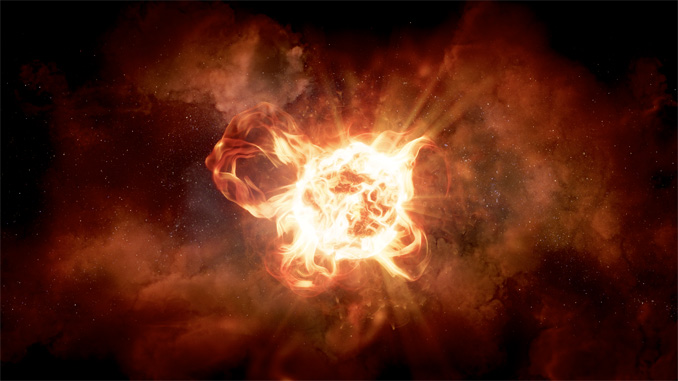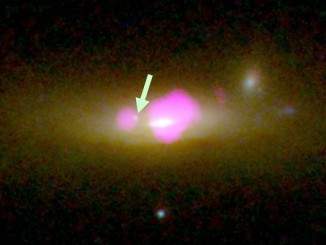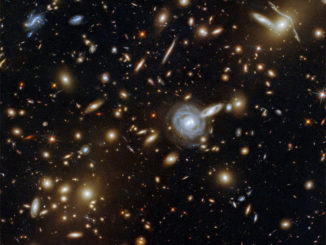
The dimming of the Betelguese last year prompted widespread speculation about the fate of the red supergiant, with some wondering about the (relatively) near-term possibility or a supernova. As it turned out, the dimming likely was caused by a gaseous outflow forming dust that briefly obstructed portions of the star’s disc as viewed from Earth.
New research shows a similar process, working at a much larger scale, is responsible for dimming the light of the red hypergiant VY Canis Majoris, a star 300,000 times brighter than the Sun whose surface would extend beyond the orbit of Jupiter in our solar system.
“VY Canis Majoris is behaving a lot like Betelgeuse on steroids,” said the study’s leader, astrophysicist Roberta Humphreys of the University of Minnesota. “This star is absolutely amazing. It’s one of the largest stars that we know of, a very evolved, red supergiant. It has had multiple, giant eruptions.”
In previous work, Humphreys and her team noted huge arcs of plasma blasted from the star, similar to solar prominences on Earth’s Sun but on a much larger scale.
Now, using the Hubble Space Telescope, the researchers were able to measure the velocities of gaseous knots and other structures still close to VY Canis Majoris, allowing them to date the eruptions. As it turned out, many of the knots can be linked to episodes in the 19th and 20th centuries when the star dimmed to one-sixth its normal brightness.

The huge star is blowing of 100 times as much mass at Betelgeuse, with some knots more than twice the mass of Jupiter.
“This is probably more common in red supergiants than scientists thought and VY Canis Majoris is an extreme example,” Humphreys continued. “It may even be the main mechanism that’s driving the mass loss, which has always been a bit of a mystery for red supergiants.”
While other red supergiants eject massive amounts of dust, VY Canis Majoris is in a class by itself.
“VY Canis Majoris may be in a unique evolutionary state that separates it from the other stars,” Humphreys said. “It’s probably this active over a very short period, maybe only a few thousand years. We’re not going to see many of those around.”
The star may have already shed half its mass. As a result, when fusion reactions eventual stop and the star’s core collapses, VY Canis Majoris might not explode in a supernova blast. It may simply collapse directly into a black hole.



